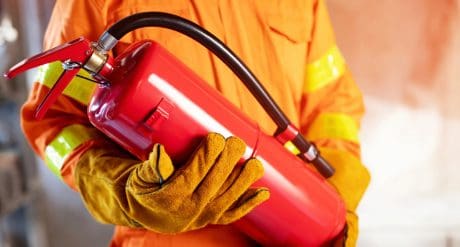
A Cut Ahead: Trending Textile Issues

Closer scrutiny of substances such as PFAS and PIP 3:1 together with the EU Strategy for Sustainable Textiles, Mandatory Digital Labelling of footwear and new standards on the safety requirements for footwear in China are all impacting the industry at large – so how can you stay ahead of regulatory change?
In our new series, we gather some of the most interesting recent inquiries from Compliance & Risks customers around trending textile issues regarding the labeling of apparel, footwear and sporting goods globally, helping you to stay a cut ahead
Q.1) When selling a product in the USA only – is it acceptable to have only the icon of the brand and not the brand name?
Answered by Stacey Bowers – Global Market Access Manager
Unfortunately not.
The Uniform Packaging and Labeling Regulations (UPLR) require consumer products to bear a “Declaration of Responsibility.” This Declaration must appear conspicuously on the label of the package and must include the name and address of the manufacturer, packer or distributor.
The name shall be the actual corporate name, or, when not incorporated, the name under which the business is conducted.
The address shall include street address, city, state (or country if outside the US), and ZIP Code (or the mailing code, if any, used in countries other than the US); however, the street address may be omitted if it is listed in any readily
accessible, well-known, widely published and publicly available resource, including but not limited to a printed directory, electronic database or website.
You can see UPLR here
Q.2) In Denmark – Is the only language required on a label Danish? Or would Norwegian, Swedish OR Danish be accepted?
Answered by Cassie Pershyn – Senior Regulatory Consultant
Just Danish is listed in the Decree on Labeling of Footwear and Labeling of Textile Products which you can see here (Chapter 3 § 16).
With that being said, most countries permit the use of other languages next to the country’s main language(s), so long as the info is accurate & not misleading.
Q.3) For the Tax ID requirement for Paraguay and Uruguay – Can you clarify if this would need to be the brand’s US Tax ID or the Tax ID for Paraguay and Uruguay?
Answered by Cassie Pershyn – Senior Regulatory Consultant
Per MERCOSUR/GMC/RES. No. 62/18, it is understood that “tax identification” is the tax records of legal or natural persons, in accordance with the current legislation of the States Parties.
So, it’s the Tax ID# in each country (i.e., Uruguay = their Uruguayan Tax ID#).
Q.4) In the US – is size required to be displayed on the back of neck or is the garment still compliant if the size is only shown on the care label?
Answered by Stacey Bowers – Global Market Access Manager
In the US, apparel must bear net quantity/ size declarations as per the Uniform Packaging and Labeling Regulations.
The Regulations require this information to appear on the “principal display panel (PDP)” of consumer packages and specify that they must be “…prominent, definite, plain and conspicuous as to size and style of letters and numbers and as to color of letters and numbers in contrast to color of background.”
With this said, I believe it is just fine for apparel size information to appear on the back of the neck OR the care label.
Your Questions Answered
Many of the above questions were submitted and answers were conveyed to Compliance & Risks customers via the “Ask Our Experts” button in C2P.
Clients use AOE to ask about the latest proposed, enacted and amended regulations and mandatory standards applicable to their products and geographies of interest.
When AOE questions can be answered in 30 minutes or less, Compliance & Risks’ subject matter experts answer them at no charge!
Stay up-to-date with our March 2023 textile update, which provides answers about labeling information required for socks in the US and EU markets, mandatory packaging requirements in Turkey, and more. You can also catch up with our previous textile update from January 2023, where we provide answers regarding leather labeling guidance in the US and textile fiber identification laws in France.
To learn more about C2P and how Compliance & Risks’ SMEs can help you with your questions, contact us today.
Stay Ahead Of Regulatory Change
Check out our latest whitepapers on Textiles EPR, Environmental Labeling Requirements In France and Packaging Labelling Legislation in Europe
Meet our Experts

Stacey Bowers, Manager, Global Market Access
Stacey Bowers, MILS, is the Manager of Compliance & Risks’ Global Market Access team.
Stacey is a self-described “law nerd” with nearly 20 years’ experience consulting on international consumer products regulations and standards. She has extensive knowledge of analytical, labeling, safety and testing issues applicable to apparel, cosmetics, food, food contact articles, footwear, giveaways/ incentives/ premiums, home textiles, jewelry, juvenile products and toys.
Stacey and her team of 10 librarians and lawyers produce current, comprehensive and customized research to address strategic business needs for retailers and manufacturers, including entering new geographic markets; facilitating education and training throughout the supply chain; and development of global best practices around regulatory compliance.

Cassie Pershyn, Senior Regulatory Consultant
Cassie joined C&R as a Senior Regulatory Consultant in March 2022.
She is a librarian by training, with a Master of Library Science and 24 years in the library field, where a highlight was her study abroad program at the British Libraries.
Among those, Cassie spent 13 years experience at Bureau Veritas Consumer Products Services, where she led and participated in client-based specialized international country research and prepared informal and formal quotations for reports, manuals and trainings for clients.
In her free time, Cassie is studying yoga. She recently completed her 200ytt (yoga teacher training) and is currently pursuing a 500ytt certification. Cassie is based in the Buffalo, NY (US) area.
Book Time With Our Team
Learn how C2P can help you stay ahead of global fashion, apparel, luxury and sporting goods regulatory changes and achieve uninterrupted market access.








